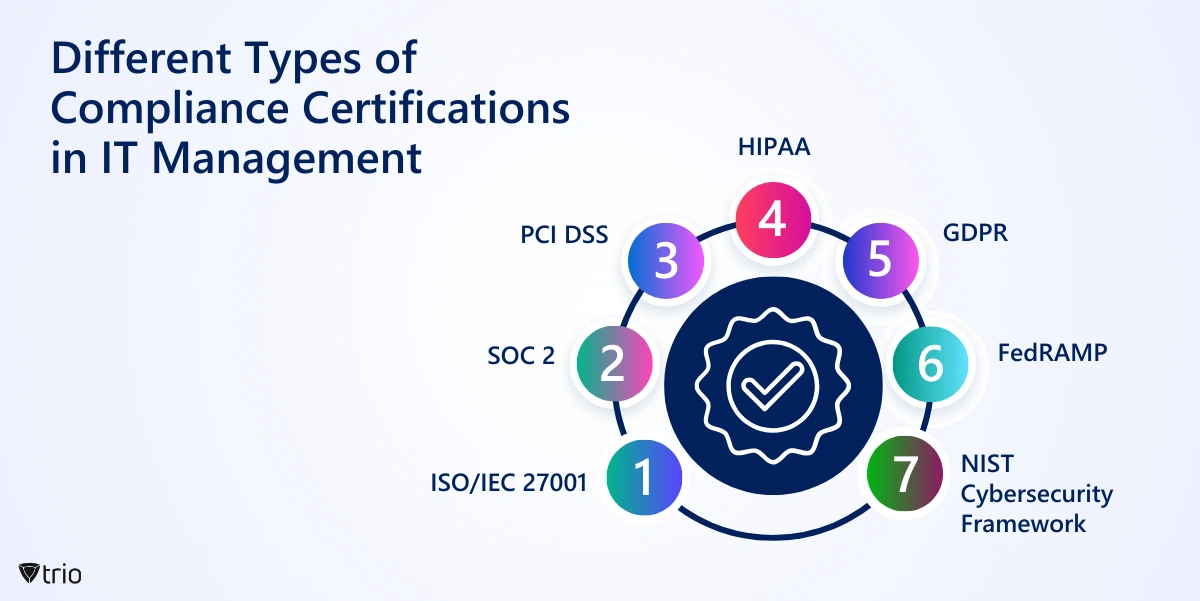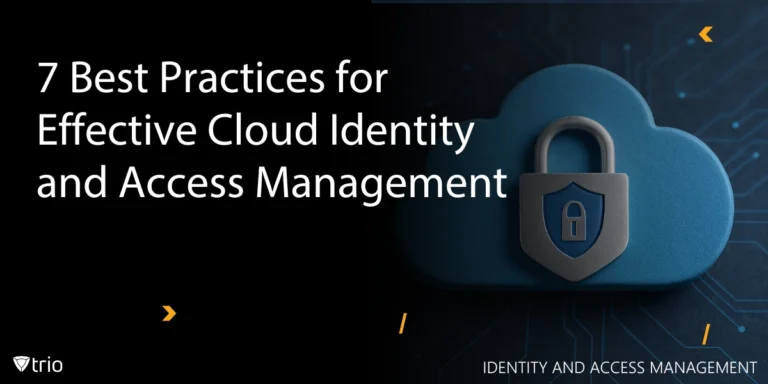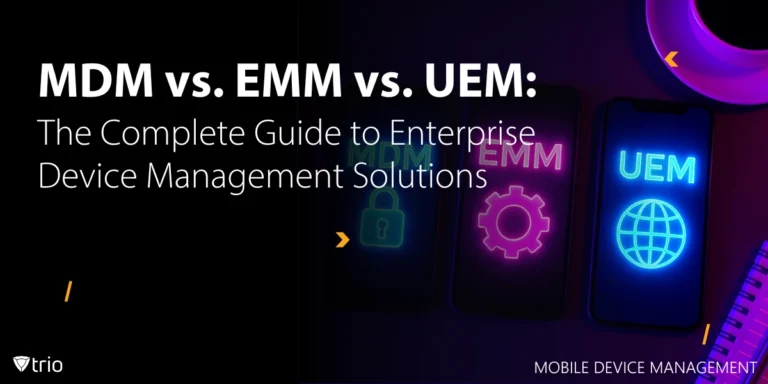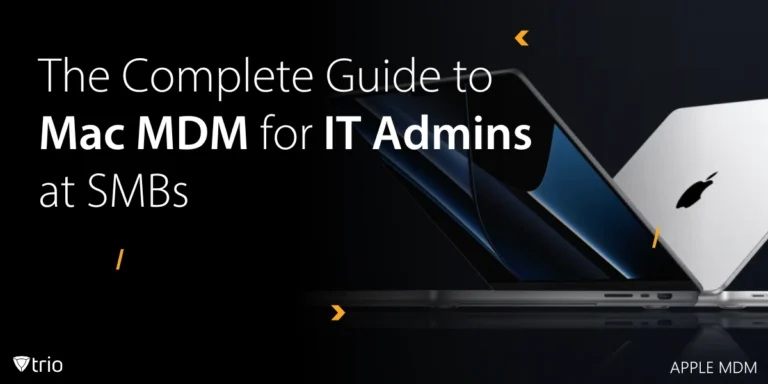In an increasingly digital environment, staying compliant with various regulations becomes a strategic necessity for businesses and organizations. This article delves into the intricate world of compliance, discussing its importance, benefits, different types of compliance, and the potential consequences of non-compliance. We will also touch on how Mobile Device Management (MDM) solutions, such as Trio, can help businesses ensure compliance.
What is Compliance?
Compliance, in the realm of Information Technology (IT), refers to the adherence of IT systems, processes, and practices to established standards, regulations, and guidelines. These standards can be set forth by regulatory bodies, industry associations, or even internal organizational policies. The ultimate goal of IT compliance is to ensure that organizations operate their IT environments in a secure, reliable, and legally compliant manner.
Why is Compliance Important?
Compliance is not just about abiding by the law; it's about building trust, avoiding penalties, and maintaining a positive reputation. Here are some reasons why staying compliant is crucial for businesses:
Trust Building: Compliance helps businesses demonstrate their commitment to safety, privacy, and ethical practices, thereby building trust with customers, investors, and partners.
Avoiding Penalties: Non-compliance with regulations can lead to legal consequences, financial losses, and damage to an organization’s reputation.
Reputation Management: Compliance ensures that organizations are operating within the bounds of the law, thereby maintaining a positive reputation.

Different Types of Compliance
There are several types of compliance that businesses need to be aware of. Each type is associated with a specific set of regulations or standards that organizations need to adhere to. Some commonly observed compliance types include regulatory, legal, financial, and data compliance.
Regulatory Compliance
Regulatory compliance refers to the adherence to laws, regulations, and guidelines set by regulatory bodies. This type of compliance is crucial for businesses as it ensures that they are operating within the legal framework. Some of the common regulatory compliance frameworks include the Health Insurance Portability and Accountability Act (HIPAA), the Payment Card Industry Data Security Standard (PCI DSS), and the General Data Protection Regulation (GDPR).
Legal Compliance
Legal compliance involves ensuring that organizations comply with all the laws and regulations that apply to their operations. This includes laws related to employment, taxes, licensing, and intellectual property. Adherence to legal compliance helps organizations avoid legal issues, fines, and potential lawsuits.
Financial Compliance
Financial compliance refers to the adherence to rules, regulations, and standards related to financial reporting and transactions. This includes compliance with regulations like the Sarbanes-Oxley Act (SOX), which mandates the accuracy of financial reports. Financial compliance is essential for maintaining financial integrity and investor confidence.
Data Compliance
Data compliance revolves around data management in accordance with relevant laws, regulations, and standards. This includes ensuring the privacy, security, and integrity of data. Data compliance is especially important in the digital age, where data breaches and unauthorized data access are common threats. Some examples of data compliance regulations include the General Data Protection Regulation (GDPR) and the California Consumer Privacy Act (CCPA).
What Are Different Types of Compliance Certifications in IT Management?
In IT Management, compliance certifications are critical for businesses to ensure their operations align with legal, regulatory, and industry standards. These certifications not only help in mitigating risks but also boost customer confidence and enhance the company's reputation. Different types of compliance certifications cater to various aspects of IT management, including data protection, cybersecurity, and system management. Let's delve into some of the key compliance certifications that are pivotal for businesses operating in the IT sector:

ISO/IEC 27001
This is an international standard for information security management systems (ISMS). It outlines the requirements for establishing, implementing, maintaining, and continually improving an ISMS within the context of the organization's overall business risks. It helps businesses manage the security of assets such as financial information, intellectual property, employee details, or information entrusted by third parties.
SOC 2
Service Organization Control 2 (SOC 2) is a framework for managing data privacy and security that applies to service providers storing customer data in the cloud. SOC 2 requires companies to establish and follow strict information security policies and procedures. Compliance is verified by external audits and is crucial for technology and cloud computing companies.
PCI DSS
The Payment Card Industry Data Security Standard (PCI DSS) is a set of security standards designed to ensure that all companies that accept, process, store, or transmit credit card information maintain a secure environment. This is essential for businesses that handle credit card transactions online or in-store to prevent credit card fraud and data breaches.
HIPAA
The Health Insurance Portability and Accountability Act (HIPAA) sets the standard for protecting sensitive patient data. Any company that deals with protected health information (PHI) must ensure that all the required physical, network, and process security measures are in place and followed. This is crucial for healthcare providers, insurance companies, and any business handling healthcare data.
GDPR
The General Data Protection Regulation (GDPR) is a regulation in EU law on data protection and privacy in the European Union and the European Economic Area. It also addresses the transfer of personal data outside the EU and EEA areas. GDPR has set a new standard for consumer rights regarding their data, and businesses must comply with its strict rules on data protection and privacy.
FedRAMP
The Federal Risk and Authorization Management Program (FedRAMP) is a government-wide program that provides a standardized approach to security assessment, authorization, and continuous monitoring of cloud products and services. This certification is essential for cloud service providers that wish to do business with the US government.
NIST Cybersecurity Framework
Although not a certification, the National Institute of Standards and Technology (NIST) Cybersecurity Framework is a policy framework of computer security guidance for how private sector organizations in the US can assess and improve their ability to prevent, detect, and respond to cyber-attacks. It's widely regarded as best practice for any organization looking to bolster its cyber defenses.
The Consequences of Non-Compliance
The consequences of non-compliance can be severe, ranging from financial penalties and legal issues to reputational damage. For instance, non-compliance with GDPR can result in fines of up to 4% of a company's global annual turnover or €20 million, whichever is greater. Moreover, data breaches resulting from non-compliance can lead to a loss of customer trust, which can have long-term repercussions on a company's reputation and bottom line.

Compliance Best Practices
Creating an IT compliance policy is an essential and necessary step for all organizations. However, there are certain best practices that can help reinforce compliance. Some of them include:
Adopt a Holistic Approach to Risk Management: Integrate the compliance policy into a broader risk management framework that considers not only regulatory compliance but also strategic, operational, financial, and reputational risks.
Cultivate a Compliance-Centric Culture: Foster a culture of compliance throughout the organization. This involves promoting awareness, accountability, and a shared commitment to ethical and compliant behavior.
Implement Proactive Compliance Monitoring: Use proactive monitoring mechanisms to detect compliance issues before they escalate. This could include continuous monitoring, automated alerts, and periodic internal audits.
Plan for Incident Response: Develop a robust incident response plan that outlines specific steps to be taken in the event of a compliance violation or security incident. Ensure that employees are trained on the plan.
Manage Third-Party Risks: Extend compliance considerations to third-party vendors and partners. Assess and manage the compliance risks associated with external entities that have access to your organization’s systems or data.
Measure Performance and Report Regularly: Define key performance indicators (KPIs) and metrics to measure the effectiveness of your compliance program. Regularly report on these metrics to management and stakeholders.
Emphasize Ethical Leadership and Governance: Leaders should set an example of ethical behavior, and governance structures should support ethical decision-making at all levels of the organization.
Provide Continuous Training and Awareness: Beyond initial training, establish a program for continuous education and awareness. Keep employees informed about emerging compliance issues, new regulations, and best practices.
Conduct Regular Simulations and Testing: Conduct simulations and testing exercises to assess the organization’s response to various compliance scenarios. This helps identify areas for improvement and ensures preparedness.
Establish a Feedback Mechanism: Establish a feedback mechanism where employees can report compliance concerns or suggest improvements to the compliance program. Ensure confidentiality and non-retaliation for those reporting.
Integrate with Business Processes: Integrate compliance considerations into various business processes. This includes product development, procurement, and other operational areas where compliance should be a built-in aspect.
Adopt an Adaptive Policy Framework: Design the compliance policy with flexibility to adapt to changing business environments, technologies, and regulatory landscapes. This enables the organization to stay agile and responsive.
Engage Stakeholders: Engage with stakeholders, including customers, investors, and regulatory bodies. Proactively communicate your commitment to compliance and solicit feedback to enhance your program.
Foster a Culture of Continuous Improvement: Cultivate a culture of continuous improvement. Encourage employees to strive for higher standards and go above and beyond compliance requirements.
Use MDM Solutions: Mobile Device Management (MDM) solutions aid IT compliance by enabling centralized control over mobile devices. The integration of MDM compliance supports IT compliance efforts by addressing challenges associated with mobile device security and data privacy.
MDM Solutions: Introducing Trio
MDM solutions like Trio can play a crucial role in helping businesses stay compliant. Trio allows you to automate processes, provide security features, and enable secure and controlled remote access to resources. It offers compliance integrations and profile management capabilities, simplifying the process of ensuring compliance across your organization.
Try out Trio’s free demo for your organization today.
Conclusion: Types of Compliance in IT Management
In conclusion, in an era where data breaches and regulatory scrutiny are omnipresent, the significance of a comprehensive IT compliance policy cannot be overstated. By embracing a holistic approach to risk management, cultivating a culture of continuous improvement, and integrating compliance into the fabric of business operations, organizations can not only meet regulatory requirements but also position themselves as ethical leaders in the digital realm.
Get Ahead of the Curve
Every organization today needs a solution to automate time-consuming tasks and strengthen security.
Without the right tools, manual processes drain resources and leave gaps in protection. Trio MDM is designed to solve this problem, automating key tasks, boosting security, and ensuring compliance with ease.
Don't let inefficiencies hold you back. Learn how Trio MDM can revolutionize your IT operations or request a free trial today!





